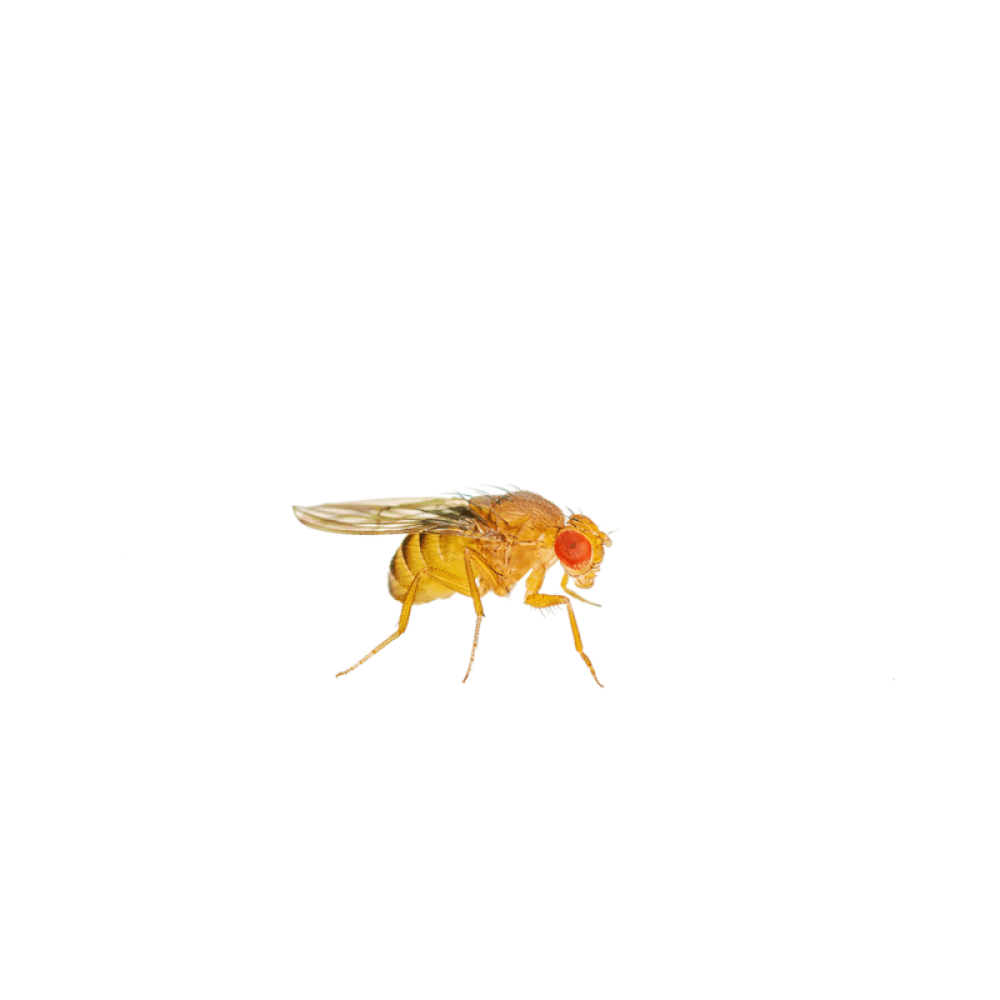
The fruit fly, or scientifically known as Drosophila melanogaster, is a small insect known for its rapid reproduction and annoying presence in homes and kitchens, especially during warmer seasons. This insect is mainly attracted to ripe or rotting fruits and decaying organic matter, making it a source of pollution and annoyance. Given its ability to spread quickly, dealing with it effectively requires understanding its life cycle and the reasons for its presence, in addition to following precise steps to get rid of it and maintain the cleanliness of the home and the health of food.
Information about fruit flies
The fruit fly is a small insect with several characteristics that enable it to spread and reproduce quickly:
- Shape : Oval and small in size, with the insect's length ranging from 3 to 4 mm.
- Colour : Light brown or yellow with prominent red eyes.
- Activity : Active during the day and move quickly, making them easy to spot.
- Nutrition : The fruit fly depends on rotting fruits and organic matter as its primary food source, where it finds a suitable environment for reproduction.
fruit fly life cycle
Fruit flies have a short and rapid life cycle, which causes their numbers to increase rapidly:
- Eggs : The female lays about 500 eggs during her lifetime, often on rotting fruit or organic matter. The eggs hatch in two to four days.
- Larvae : The larvae feed on the pulp of rotting fruits for 5 to 7 days, accelerating the process of fruit rot.
- Pupae : The larvae pupate in the soil or on nearby surfaces, and remain inactive for two to three days.
- Adult Insect : The adult fly emerges from the cocoon and begins to reproduce within a few hours, quickly resuming the life cycle.
Fruit fly damage
Despite their small size, fruit flies cause many damages:
- Food contamination : Bacteria such as salmonella are transferred from rotting areas to exposed food.
- Fruit and vegetable spoilage : leads to rotting of home crops, causing financial losses.
- Nuisance : They cause a nuisance inside the house due to their large number and rapid reproduction.
Tips to get rid of fruit flies
- Clean your kitchen regularly : Throw away overripe or rotten fruits and vegetables immediately. Wash kitchen surfaces and utensils daily.
- Store food properly : Store fruits and vegetables in the refrigerator or in airtight containers. Make sure the trash is tightly covered and emptied regularly.
- Using natural traps : Make a trap using apple cider vinegar and a little dish soap inside a container covered with perforated plastic wrap.
- Cleaning drains : Pour boiling water or use pipe cleaners to remove accumulated organic matter.
- Use pesticides when necessary : If the problem persists, specialized pesticides such as effective fly products can be used to ensure that they are completely eliminated.
Conclusion
Fruit flies may seem like a minor problem, but they can become a real nuisance if left untreated. By understanding their life cycle and the reasons behind their spread, you can take effective measures to get rid of them and keep your home clean and fly-free. If the problem persists, don’t hesitate to consult a pest control expert for specialized solutions.

